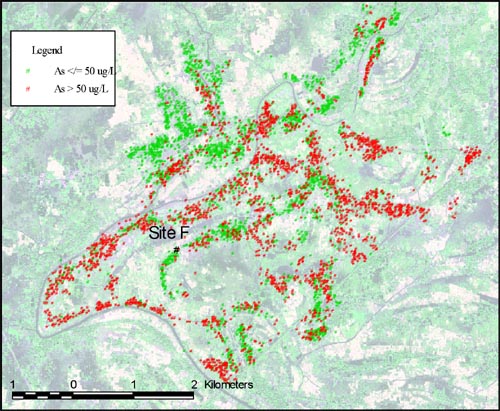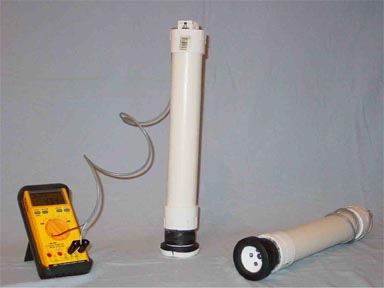
A cost-effective design for a simple color meter that measures spectral reflectance of sediment samples at two pre-selected wavelengths is presented. Differences in the reflectance spectra of Fe2+ and Fe3+ iron oxyhydroxides permits the meter to provide rapid evaluation of the redox conditions of an aquifer and therefore offers a possible way to estimate groundwater arsenic concentration. Tests on two prototype meters indicate that a design using light emitting diodes (LEDs) with peak wavelengths at 500nm and 590nm provides results comparable to a more expensive spectrophotometer.
The cost of materials and labor in constructing a prototype meter was just under $360—almost 1/17 the cost of a Minolta CM-2500d Spectrophotometer, but more than seven times the target cost of $50. However, mass production and some design changes could reduce this cost to the point that it might feasibly be deployed by well-drilling teams throughout the arsenic-affected regions of Bangladesh. This would potentially reduce the number of new wells later found to have high-arsenic concentration and also reduce the cost of a new well.
 |
| Figure 2: Distribution of high- and low-arsenic wells in the Araihazar Upazilla (District) 30km east of Dhaka. The widely variable distribution of good (≤50µg/L As) and bad (>50µg/L As) wells is visible here. Even in areas that have predominantly high-arsenic wells, there are low-arsenic wells scattered throughout, and vice-versa. |
 |
| Figure 6: Completed meter prototypes with digital multi-meter (lower left). The arrangement of LEDs around the central photodiode is visible inside the measuring head of the meter at lower right. |
Go to Science Research Projects.
Go to Learning Objectives of Research Project.
Return to E&ESJ home page.
Last updated: 7 May 2001, KAK.